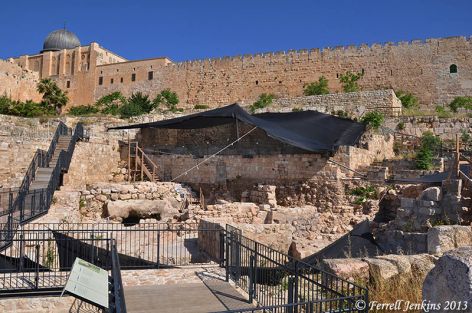
Archaeological Discovery Confirms Biblical King Hezekiah's Existence Through Ancient Seal
Archaeological discoveries continue to validate the historical accuracy of biblical accounts, with a recent finding providing compelling evidence of King Hezekiah's existence. A clay seal impression (bulla) bearing his name was discovered in Jerusalem near the Temple Mount's southern wall.
The seal, measuring just over a centimeter in diameter, features a two-winged sun disk with ankh symbols and a Hebrew inscription reading "Belonging to Hezekiah, (son of) Ahaz, king of Judah." This matches the biblical record of Hezekiah being Ahaz's son (2 Kings 18:1).

Ancient seal of King Hezekiah
The discovery was made during legitimate excavations led by Dr. Eilat Mazar from Hebrew University of Jerusalem's Institute of Archaeology. Unlike previous Hezekiah seals found through unauthorized digs, this artifact's authenticity is well-documented through proper archaeological methods.

Ancient stone ruins overlooking valley
Dating back to approximately 729-686 B.C., the seal features Egyptian-style imagery including a winged sun and ankh symbols. This reflects the complex political and religious landscape of ancient Judah, where Hezekiah ruled as king while implementing religious reforms to remove paganism.
The seal's discovery adds to a growing body of archaeological evidence supporting biblical narratives. The Biblical Archaeological Society has documented 50 biblically mentioned individuals whose existence has been confirmed through archaeology.
Such findings not only validate the Bible's historical accuracy but also strengthen its credibility as a reliable historical document. The discovery demonstrates how archaeological evidence continues to align with biblical accounts, providing tangible proof of the text's historical authenticity.
Key Facts:
- Found: Near Temple Mount's southern wall, Jerusalem
- Date: Approximately 2,700 years old
- Inscription: Confirms Hezekiah as son of Ahaz
- Size: Just over 1cm in diameter
- Significance: Provides physical evidence of biblical king's existence
- Context: Used as official royal seal for government documents
This archaeological discovery represents another significant piece of evidence supporting the historical accuracy of biblical narratives and the existence of key figures mentioned in scripture.
Related Articles
Noah: God's Chosen Survivor in a World of Evil

